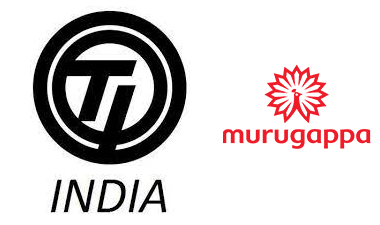0. What is this post about?
The Indian government, via its annual budget, provides incentives to certain industry sectors. With the government’s support, these industry sectors are able to increase their revenue in the coming years. Typically, the government provides multi-year support spanning over 5 years or more. This allows companies to plan for long term capital expenditure, in order to reap benefits from government schemes. Studying and understanding these government schemes, can help retail investors pick listed stocks in corresponding industry sectors. With long term growth visibility, a certain government support, retail investors with mid to long term investment horizon can selectively pick stocks to get good returns from earnings growth in these companies, and participate in government driven economy growth. In this post, we will understand one such government scheme – Production Linked Incentive (PLI). We will cover one out of thirteen sectors under the PLI scheme in this post (Auto Component sector), part one of five part series posts. Let’s get started.
1. What is a PLI Scheme?
1.1 What is PLI?
The Indian government generates income by levying taxes on companies, salaried employees, imports and exports etc. This money is then invested by the government for social welfare, and development projects for the country. One such key scheme is the Production Linked Incentive (PLI) scheme. In one sentence, PLI scheme gives monetary incentives linked with production target to a company. In other words, if a company achieves a certain sales target, then the government will give monetary incentive to that company. The company will first have to apply and get eligible under the PLI scheme.
The PLI scheme typically gives 4-6% incentive on meeting sales targets. The incentive is given for 5 years, considering sales of the starting year as base. Incentive percentage over the years taper off, till the end of the 5 year scheme. The PLI scheme can be extended for more years, if deemed necessary by the government. In certain cases, the government provides additional support to a sector. Example: DLI or Design Linked Incentive for semiconductor sector. Under DLI, the government will cover 50% costs for designing a semiconductor chip, which includes software licensing cost, prototype development cost, testing cost etc. In this post, we will focus on companies benefiting from PLI schemes, and will mention any side benefits such as DLI if applicable.
1.2 Who can participate?
Both foreign, and Indian companies can participate in the PLI scheme. However, the manufacturing should be done in India. Thus, foreign companies, who only do assembly in India, are not eligible for the PLI scheme. Application to the PLI scheme is pretty straightforward. Interested companies can register online on respective government ministry sector websites, and bid for the PLI scheme. Example: Applications for PLI scheme around electronics and semiconductors can be made on Ministry of Electronics and IT (https://pli.ifciltd.com/).
1.3 What is the purpose behind the PLI scheme?
The Indian government launched the PLI scheme in March 2020. The purpose behind the PLI scheme is to grow domestic manufacturing in India, create jobs, and boost India’s GDP. The government expects to create 60 lac jobs (6 million), driven by these PLI schemes. Typically, for a company to set up a manufacturing hub in India requires a long drawn out process to get clearances, purchase lands, navigate the bureaucracy etc. PLI scheme brings focus from the central government, thus helping to fast track the entire process of setting up manufacturing hubs and meeting sales targets.
1.4 How does the Indian government benefit ?
The Indian government benefits in multiple ways.
- Creation of Jobs: Creating more jobs for the Indian workforce, in turn will create positive sentiment towards the government, hopefully resulting in more votes for the government.
- Higher Tax revenue: PLI schemes incentivizes foreign companies, Indian companies, and budding Indian entrepreneurs to set shop in India. This will, over the long term, lead to more tax revenue for the government. This tax revenue will come from corporate taxes, export taxes, and income taxes from those employed in these companies.
- Achieve Self-Reliance: PLI scheme will make India more self-reliant. The current ruling BJP government calls it “Atma Nirbhar Bharat” (Hindi version of Self-reliant India). Self- reliance reduces costs of importing raw material and technologies, and shelters India to a certain extent from global macro-economic changes.
- Sustained Long term nation development: As technology age progresses, countries should keep up, or lose out. History has taught us that early adopters of technology such as gunpowder, had an edge over other countries who did not do so. Same for electricity, internet and so on. The Indian government feels that certain industry sectors will define the future growth of a country, such as the semiconductor industry. On the other hand, certain industry sectors need to be enabled to come at par with the developed countries, for example infrastructure, which will reduce logistics costs for all companies operating in India.
1.5 Is the PLI scheme in India the first of its kind globally?
No. Governments across the world spend money, create laws, control import/export taxes to support and growth domestic industries. Example: Countries such as China, US, Japan, South Korea, Taiwan spend billions of dollars to support and grow their domestic semiconductor industry. This support includes monetary support to set up plants, purchase equipment; create laws to prevent rival countries from stealing domestic technology.
1.6 Which industry sectors are covered in the PLI scheme?
Thirteen sectors are covered in the PLI scheme as of July 2022. These are listed below, along with the PLI scheme budget allocated to each of them.
Auto Components (INR 26K Crore)
Automobile (INR 26K Crore)
Aviation (drones) – (INR 120 Crore)
Chemicals (INR 18K Crore)
Electronic Systems (INR 48K Crore)
Food Processing (INR 11K Crore)
Medical Devices (INR 3.5K Crore)
Metals and Mining (INR 6.5K Crore)
Pharmaceuticals (INR 22K Crore)
Renewable Energy (INR 22K Crore)
Telecom (INR 12K Crore)
Textiles and Apparel (INR 11K Crore)
White Goods (INR 6K Crore)
As and when more sectors are included, I will update this post to reflect the same.
2. Auto Components – PLI Scheme winner stocks
2.1 PLI Scheme details for Auto Components
The PLI Scheme for Auto Components was announced in October 2021. Private companies incorporated/registered in India, with manufacturing facilities in India, or those with the intent to set up manufacturing facilities in India are eligible to apply. 100% foreign owned companies registered in India are also eligible to apply. Allocated incentive budget is INR 25,938 Crore. This is limited budget allocation for the next 5 years (till FY 2027-28). If the budget is exhausted in less than the planned 5 years, then the scheme will get over. The PLI incentive varies from 13% to 18% incentives, based on sales targets being met.

2.2 Stock Picks from Companies approved under Auto Component Scheme
There are 75 companies approved in the Auto Component PLI scheme. As it is a long list, I have kept this list in Appendix 1 of this post, along with info on whether this company is listed on the Indian Stock Market or not. Now let’s follow a series of steps to select three stocks from the list of all Auto component companies granted PLI scheme.
Step 1: Remove non-listed companies
As we are looking to pick company stocks to invest into via the stock market, we will remove all companies which are not listed on NSE (National Stock Exchange) or BSE (Bombay Stock Exchange). This leaves us with 31 companies, out of 75 companies granted PLI scheme.
Note 1: I have included companies whose parent company is listed on NSE/BSE. Example: BASF catalyst is a subsidiary of BASF, which is listed on the stock market.
Note 2: I have excluded companies which are not listed directly or indirectly. Example: Hero Cycle is not listed on the stock market, but Hero MotoCorp is listed. However, Hero MotoCorp is not the parent company of Hero Cycles, hence Hero Cycles is considered as a non listed company.
In the next five steps, we will use technical indicators to narrow down our stock picks.
Step 2: Remove Companies with ROCE < 10%
Return on Capital Employed (ROCE) indicates the efficiency with which a company generates returns from the capital deployed. Higher the ROCE, the more efficient the company is. To remove less efficient companies, we will remove all listed companies with ROCE < 10%. This leaves us with 21 companies.
Step 3: Remove expensive Companies
In this step, I will remove all companies with Price to Earnings multiple (PE) of more than 50. Companies with PE>50 are very highly priced companies. The industry average PE of auto-component maker companies is 32 (source: screener.in). Buying a high PE stock is a larger discussion topic. In short, high PE companies have to consistently show high performance annually, in terms of revenue and profit growth. More often than not, a high PE company goes through time correction (price remains same over multiple years, thus with rise in earnings, the PE normalizes over time), or price correction (PE re-rates downwards to match other industry peers PE). Both of these outcomes are undesirable to us, as we want to create wealth in the long term through price appreciation of the stock. And who doesn’t like to buy things at a discount :-).
This leaves us with 17 companies.
Step 4: Remove slow growing companies
We will look at Revenue CAGR for the past 5 years, and remove companies whose top-line (or revenue) CAGR is less than 5%. This is done to remove slow growing companies from our pick list. Do note that historical slow revenue growth does not mean that the company cannot grow at a faster rate in the future. It can. However, the chances of faster future growth is slim, as we are looking at a large past time period of 5 years. Second point to note, that the auto-component company might grow faster than the listed parent company. Example: Bosch Chassis Systems might grow faster than the parent company Bosch. However, as we will invest in the parent company stock, our investment returns will be based on the parent company’s performance, and not the subsidiary’s performance.
After applying this filter, we are left with 10 companies.
Step 5: Remove companies with red flags
In this step we will screen out companies with any of below two red flags. Debt to Equity > 0.5. And promoter pledge % > 20%. High debt may cause trouble to companies in an increasing interest environment, as is evident in 2022 and 2023. High promoter pledge % is a worrying sign in case company defaults on the debt, in which case the debt lending institution can sell the pledged equity to make good of the debt.
After applying this filter, we are left with 9 companies.
Step 6: Scoring all technical indicator to rank stocks
In this interesting step, we will allocate points to remaining stocks for each of the below 5 technical indicators, and then rank them to find the top 3 stock picks.
PE Score: If PE <20, Stock gets 3 points, if PE between 20 and 30, stock gets 2 points, if stock between 40 and 30, stock gets 1 point, else 0 point.
ROCE Score: If ROCE <15%, Stock gets 1 point, if ROCE between 25% and 15%, stock gets 2 points, else stock gets 3 points.
OPM Score: If OPM <10%, Stock gets 1 point, if OPM between 15% and 10%, stock gets 2 points, else stock gets 3 points.
Revenue CAGR: If Revenue CAGR <10%, Stock gets 1 point, if Revenue CAGR between 20% and 10%, stock gets 2 points, else stock gets 3 points.
Profit CAGR: If Profit CAGR <10%, Stock gets 1 point, if Profit CAGR between 20% and 10%, stock gets 2 points, else stock gets 3 points.
Next, we will add points for all the 9 stocks, and rank them and decreasing order of points.
The top 3 companies as per this ranking are our stock picks from the Auto Component PLI finalised companies.
And the three companies are.. Drumroll….
Pick 1: Sharda Motor Industries Limited

Pick 2: BASF Catalysts India Private Limited (part of BASF)

Pick 3: Tube Investments of India (part of Murugappa group)

Bonus Stock Pick: Sansera Engineering

List of the final shortlist companies, with points scoring based on technical indicators, and final ranking is below for reference.

3. When to rebalance and other queries?
One should note that the above shortlist is purely based on technical indicators. You should do a fundamental analysis as well for these companies. Fundamental analysis involves knowing the company’s history, its promoters, senior management, avoiding any companies with fraud reports in the past etc. Having said that, the shortlisted companies above seem decent.
Sharda Motor is a family run business, with the new generation of Relan family taking steeds of the company. The only drawback of Sharda Motor is their client concentration, with two clients contributing to 60% of revenue.
BASF is a reputed global company, based out of Germany, with a good and clean track record.
Tube Investments is part of the reputed Murugappa group of companies.
Sansera Engineering is a 40 year old company, led by IIT and IIM alumnus Mr Sekhar Vasan.
Do note that the above technical analysis is done in July 2022. Please redo the same analysis around the time you plan to invest, to get revised ranking and stock shortlists.
You should re-balance these stock picks at max once a month, and a minimum of once a year. This will allow you to exit poor performing stocks, who might also miss out on getting the PLI incentives. On the other hand, you can invest more in better performing shortlist stocks.
Did your favourite auto-component stock make the shortlist above? Do comment below!
Happy investing!
Appendix 1: Companies shortlisted for Auto Component PLI Schemes
| # | Company Name | Listed on Stock Market? |
| 1 | Maruti Suzuki India Limited | Y |
| 2 | Pinnacle Mobility Solutions Private Limited | N |
| 3 | Bharat Forge Limited | Y |
| 4 | Hero MotoCorp Ltd | Y |
| 5 | Advik Hi-Tech Private Limited | N |
| 6 | Aisin Automotive Haryana Private Ltd | N |
| 7 | Alicon Castalloy Limited | Y |
| 8 | Aptiv Components India Private Limited | N |
| 9 | Aptiv Connection Systems India Private Limited | N |
| 10 | Asahi India Glass Ltd | N |
| 11 | Asia Investments Private Limited | N |
| 12 | Automotive Axles Limited | Y |
| 13 | Axletech India Private Limited | N |
| 14 | BASF Catalysts India Private Limited | Y |
| 15 | Bosch Automotive Electronics India Private Limited | Y |
| 16 | Bosch Chassis Systems India Private Limited | Y |
| 17 | Bosch Limited | Y |
| 18 | Cummins Technologies India Private Limited | Y |
| 19 | Daicel Safety Systems India Private Limited | N |
| 20 | Dana Anand India Private Limited | N |
| 21 | Dana TM4 India Private Limited | N |
| 22 | Danblock Brakes India Private Limited | N |
| 23 | Delphi-TVS Technologies Limited | N |
| 24 | Denso Ten Minda India Private Limited | N |
| 25 | Garrett Motion Technologies India Private Limited | N |
| 26 | Hella India Automotive Private Limited | N |
| 27 | Hero Cycles Limited | N |
| 28 | Imperial Auto Industries Limited | N |
| 29 | International Tractors Limited | N |
| 30 | J K Fenner (India) Ltd | N |
| 31 | Jay Ace Technologies Limited | N |
| 32 | Jay Fe Cylinders Limited | N |
| 33 | KalyaniTechnoforge Limited | Y |
| 34 | Krishna Landi Renzo India Private Limited | N |
| 35 | Krishna Maruti Ltd | N |
| 36 | Kyungshin Industrial MothersonPvt Ltd | N |
| 37 | Linchpin Technologies Private Limited | N |
| 38 | Lucas-TVS Limited | N |
| 39 | Lumax Auto Technologies Limited | Y |
| 40 | MahleAnand Thermal Systems Private Limited | N |
| 41 | Mando Automotive India Private Limited | N |
| 42 | Minda Corporation Limited | Y |
| 43 | Minda Industries Limited | Y |
| 44 | Mitsubishi Electric Automotive India Private Limited | N |
| 45 | Motherson Sumi Systems Limited | Y |
| 46 | Motherson Sumi Wiring India Limited | Y |
| 47 | Musashi Auto Parts India Private Limited | N |
| 48 | Napino Auto and Electronics Limited | N |
| 49 | Neel Metal Products Limited | N |
| 50 | Neolite ZKW Lightings Private Limited | N |
| 51 | Nidec India Private Limited | N |
| 52 | Padmini VNA Mechatronics Limited | N |
| 53 | Pricol Limited | Y |
| 54 | Rockman Industries Limited | N |
| 55 | Sandhar Technologies Limited | Y |
| 56 | Sansera Engineering Limited | Y |
| 57 | Schaeffler India Limited | Y |
| 58 | Sharda Motor Industries Limited | Y |
| 59 | Sona BLW Precision Forgings Limited | Y |
| 60 | Steel Strips Wheels Limited | Y |
| 61 | Sundram Fasteners Limited | Y |
| 62 | Tata Autocomp Systems Limited | N |
| 63 | Tata Cummins Private Limited | N |
| 64 | Tata Ficosa Automotive Systems Private Limited | N |
| 65 | The Hi-Tech Gears Limited | Y |
| 66 | Toyota Industries Engine India Private Limited | N |
| 67 | Toyota Kirloskar Auto Parts Private Limited | N |
| 68 | Tube Investments Of India Limited | Y |
| 69 | Valeo India Private Limited | N |
| 70 | Varroc Engineering Limited | Y |
| 71 | Vitesco Technologies India Private Limited | N |
| 72 | Wabco India Limited | Y |
| 73 | Yazaki India Private Limited | N |
| 74 | Bharat Heavy Electricals Limited | Y |
| 75 | Ceat Limited | Y |





Pingback: Picking Pharma stocks based on PLI Scheme - Mayank Dwivedi
Pingback: Picking Stock Gems Based on PLI Scheme | PLI Scheme OEM Stock Picks